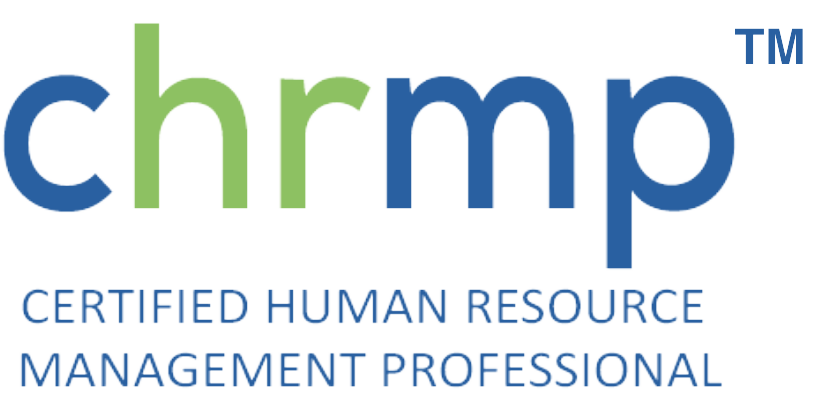Preparation of figures in effective technical writing is a matter of great concern.
1. Definition of figures in technical writing
We may define figures as any visual element like graphs, charts, diagrams, and photographs. Graphs and charts are the fastest method of presenting data. A well designed graph is much better illustration of scientific data in comparison to verbal description.
Graphs and charts may also be in form of pie charts, flow-charts, histograms etc.
2. Caption of figures
A figure given in a technical report must have a specific number, so that it may be referred easily.
It should also have a caption, which should be concise, but comprehensive. It should be able to describe the data prevented. Also, it should be able to draw attention to a distinct feature, which otherwise, may have gone unnoticed.
We must bear in mind that the figures, may help in better interpretation of the research findings. That is the reason, why, sometimes, salient points of the figure are briefly described there itself.
3. Differences between figures and table
Figures include drawings, pie charts, line carts, bar charts, histograms, diagrams, and photographs. Table on the other hand, are the compilation of the data in the form of rows and columns.
For more information on tables, please refer to the following blog, published by us, earlier.
11 Steps to Prepare Tables in a Technical Report
4. List of figures
Readers prefer to use the list of figures to locate visual information ( figures, drawings , photos) in technical writing.
Some general rules are:
- Abstract , Summary, Conclusion and Recommendations, neither have list of figures nor the figures or tables.
- Research journals, may not have list of figures. Books, technical reports must have list of figures.
5. Guide lines for figures in technical writing
5.1 Control the figure elements
All the figure elements including letters, numbers, must be legible and distinct at final size
In general, technical writes must try to make the figure type size large enough, so that it is at least 8 points after reduction. No type should be less than 6 points.
- Make the graphs simple in technical writing
We should try to make the graphs simple. Some simple rules are:
- Scale of a line graph should be designed in such a way as they are able to depict the results clearly.
If a small change in one parameter brings an appreciable change in the other, the later one should be highlighted. - Effect of spacing of grid lines in a graph.
Generally, we should avoid grid lines in a graph. However, if the exact values of parameter are to be shown, then the narrow grid lines may be used.
On the other hand, if we want to show approximate values of parameters, wide grid lines should be the preferred choice. - Simplify an over-crowded graph.
- Similarly a line graph with several group of related information, should be avoided
5.2 Figures should be self explanatory
We may do these by simplifying our presentation and adopting an easy to understand title for the contents of figures.
Once we present a technical information in the form of a figure , it should not be repeated, in another way.
5.3 Follow the instructions of research journals in technical writing
The instructions of journal must be followed in preparation of figures, if you are submitting a research paper for publication.
5.4 Maintain the clarity of photographs, visual, maps, drawings.
Unless photographs, visuals, maps, drawings are clear, they will not serve any purpose.
5.5 Use old figures as templates in technical writing
If you are making a complex figure, with multiple graphs and a precisely aligned layout, never throw it away.
This may save your time and energy next time, if you use it as a template.
5.6 Use modern tools in composing of figures in technical writing
Gone are the days, when we, the oldies, used to prepare graphs, charts, histograms etc. by actually plotting the values on a graph paper.
It has been given a new direction by many modern tools like Matlab.
Also, many software’s are available, which may be used for making of figures in technical writing. Similarly, latest versions of micro-soft-office may help you a lot in this matter. The readers may refer to these.
Technical writing examples of HRM staff trainingDocumentationWritingHRM Staff DevelopmentTraining Design and Development of HRM Staff Training
Types of figures:
There are many types of figures in technical writing. Some of them are:
- Diagrams – these are used for representing a model or an object. They can be drawn manually or by using computer software. Diagrams are usually used for representing physical objects, such as people, machines, buildings, vehicles, tools, etc.
HR operations of HRM staff training The Internet has made it easier than ever before. People can easily access information online. Technology is used at every step of our lives.
If you want to write well, you first need to know what makes good technical writing. In addition to being clear and concise, technical writing needs to be accurate and interesting.
When writing a research paper, it is important to follow the instructions given by your instructor. Your teacher will guide you throughout the entire process of writing a research paper.
- Flow-chart – this type of figure shows the relationship between different parts or activities of a system. It is commonly used to represent the logical structure of a process.
- Pie chart – it is a circular diagram which represents percentage distribution of various components or elements within a group. Pie charts are widely used in marketing and business management.
- Histogram – it is a bar chart that shows frequency distribution of numerical values. Training and development in HRM of HRM staff training
Types of graphs :
The following are some of the most common graphs used in technical writing:
- Bar Chart – In this type of graph, each bar represents one value. The height of the bars indicates how frequently the corresponding value occurs. Bar charts are mainly used for showing frequencies, percentages, averages, medians, ranges, and so on.
- Column Chart – This type of graph has two axes. Each axis represents one variable.
staff development of HRM Documentation
How to write a good thesis statement?
A thesis statement is the main idea of your paper. It should be written at the beginning of the introduction section. Your thesis statement should be specific and clear. There should not be too long sentences. Also, make sure that you have enough supporting evidence to back up your claim. Technical Writing of HRM staff training.
How to Write a Good Paper Introduction
Introduction:
In order to introduce your topic, you need to give a brief summary of what you would discuss in the rest of the paper. You need to state your purpose clearly. For example: “This research aims at finding out whether there is a correlation between the number of employees and the size of the organization”
Operational functions of HRM
The operational functions of Human Resources Management include recruiting, training, compensation, benefits, performance management, and employee relations. These functions are important for any organization, especially when they involve human resources.
Conclusion:
Your conclusion should summarize all the points made during your discussion. You must include all the important information that was discussed throughout the paper. For instance, if you had introduced three methods of measuring employee performance, then you must conclude with the fact that the best way to measure employee performance is through 360 degree feedback.
Documentation writer should plan of HRM staff training
Documentation refers to everything related to creating, maintaining, storing, retrieving, sharing, and publishing information. It includes forms, reports, records, manuals, instructions, procedures, policies, guidelines, presentations, letters, and other documents.
Documentation writing is considered as a part of technical writing. The entire document is created to record something that requires further explanation.
Training design and development can be seen as documentation. Documenting the process of designing and developing training courses is an integral part of training design and development.
Documentation writers work closely with trainers and managers who conduct the training course. They create the necessary materials required for conducting the training session.
Technical writing is about conveying knowledge effectively using appropriate language. It also involves presenting ideas by means of different types of media such as text, graphics, video, animation, audio, etc.
Technical writing skills are essential for every professional. In this article we will discuss some tips on how to prepare figures in effective technical writing.
The technical document should be well-written. The quality of writing depends upon the clarity of the content and style used. If the reader cannot understand the content easily, it is difficult to grasp the point of the document.
If the reader does not get the meaning of the document or does not understand the content, he/she may ask questions in his mind. This makes him/her confused and unable to understand the message conveyed in the document.
Common errors that are found in the entire process of technical writing are :
- Poor grammar and spelling
- Lack of punctuation marks
- Clarity of writing
- Use of inappropriate vocabulary
- Incorrect use of abbreviations
- Unnecessary repetition of words
- Improper sentence structure
- Poor sentence flow
- Sentence fragments
- Wrong choice of word
- Lack of cohesion
- Lack of logic
- Lack of consistency
- Repetition of ideas
- Lack of coherence
- Lack of relevance
The active voice and passive voice is to be kept in mind while writing a report . Active voice states that the subject performs the action whereas in passive voice the object receives the action.
Active Voice: He wrote the letter.
Passive Voice: The letter was written by him.
In the above example, the subject performed the action . Therefore, the verb “to write” has been placed in the first person form.
A good technical writer should always ensure that the sentences are grammatically correct.
This can be used in order to improvise Communication skills as well .
There are many tools available online which help you to check your English Grammar. You can search for these tools on Google.
The effective figures are the number of people who read your blog post. If you want to increase the number of readers, then you need to write great content. Understanding the target audience can help you to improve the quality of your content.
You can use various tools like Google Analytics, Alexa, Quantcast, etc., to find out the traffic statistics of your website. These tools provide information regarding the demographics of your visitors. You can use this information to make improvements in your content.
It is important to give proper references when citing sources. When you cite sources, you mention where they are located.
Descriptive titles can ensure better visibility of your articles. A title should contain keywords that describe the topic of the article.
It is very important to select relevant images and videos for your posts. Images play an important role in enhancing the appeal of your content.
When you are writing a research paper, you must use an appropriate format. There are specific formats available for different purposes. You can use any one of them depending on the purpose of your assignment.
Use bullet points wherever possible.
Technical communication is an essential part of our daily life. It helps us to solve problems effectively.
Technical writers have to communicate with their clients through emails, phone calls, meetings and conferences. They also have to interact with other professionals such as engineers, managers, project leaders, sales representatives, product managers, marketers, business analysts and IT specialists.
Technical writers often work remotely from home, so it is necessary to keep up-to-date with the latest technologies and trends in the market.
The Writing process is quite complex .Writing is not just about putting words together; it requires careful planning. Before starting your writing, you will need to decide what kind of document you want to create. Are you going to write a formal or informal essay? Will you be using academic or nonacademic language? What type of structure do you want to use?
For example, if you are writing a research thesis, you might choose a question-answer structure, because it allows you to address all the questions raised by your reader. However, if you are writing an argumentative essay, you may want to use a cause-effect structure, because it shows how each point contributes to the main idea.
Nowadays, technology has changed the way we live. We depend on smart devices to accomplish almost everything.
Frequently Asked Question :
How to improve your technical writing skills?
- Write about topics that interest you.
- Read books on writing and editing.
- Practice writing with friends and family.
- Get feedback from editors.
How is technical writing different than business writing?
- Technical writing is about conveying information in a clear and concise way.
- Business writing is about communicating with people who have power over you.
- Technical writers work on projects that are usually published online.
- Business writers work on projects that may be published offline.
What is the job of a technical writer?
- To write clear, concise, accurate information in an understandable way.
- To ensure that all content is well organized and easy to find.
- To make sure that all content is consistent with the company’s style guide.
- To create writing guidelines and standards so that everyone can work together.
Ripples Learning is continuously striving to add value to knowledge pertaining to human resource field, through its blogs and different state of the art programs.
For knowing more about us, please go through the following websites:






